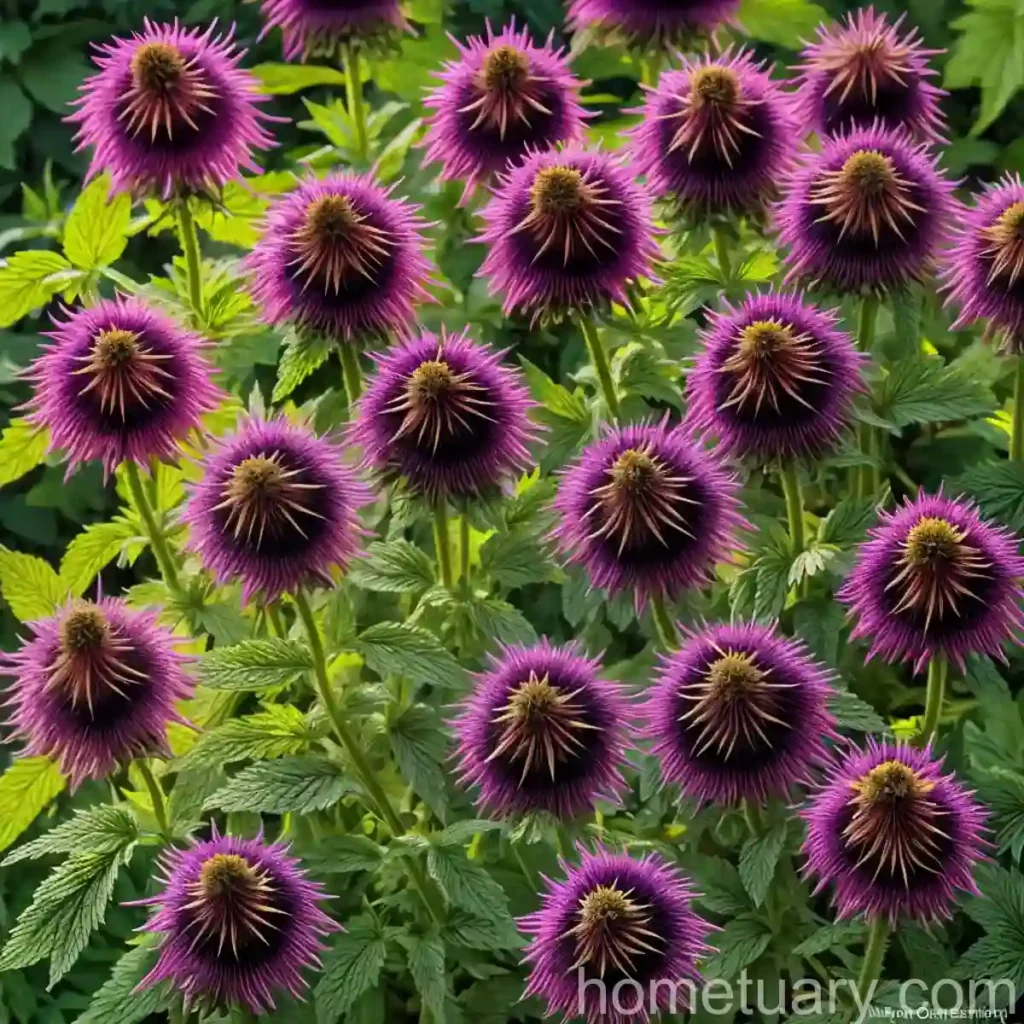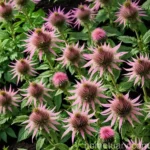The Marvelous World of Bee Balm (Monarda ‘Grape Gumball’)
Plants enrich our lives in numerous ways, from adding aesthetic appeal to our surroundings to providing essential resources for ecological balance. Among these incredible botanical wonders is the bee balm, scientifically known as Monarda ‘Grape Gumball’. This luscious and vibrant plant offers a host of benefits, from its medicinal uses to its role in supporting local wildlife. In this comprehensive guide, we delve into the captivating realm of bee balm, exploring its cultural significance, care requirements, uses, and much more.
What is Bee Balm (Monarda ‘Grape Gumball’)?
Bee balm is a stunning herbaceous perennial plant that belongs to the mint family, Lamiaceae. With its eye-catching clusters of vibrant flowers and aromatic foliage, it has established itself as a favorite in gardens and landscapes. As an esteemed member of the Monarda cultivars, the ‘Grape Gumball’ variety enthralls with its unique presentation and enthralling fragrance, making it a must-have for plant enthusiasts and anyone looking to enhance their green spaces.
Key Takeaways – Bee Balm (Monarda ‘Grape Gumball’)
Before we proceed further, let’s glance over the key takeaways that will form the essence of our exploration into the world of bee balm:
- Cultural Significance: Bee balm holds historical and contemporary importance, from its traditional medicinal uses to its value in modern landscapes and gardens.
- Care Requirements: Understanding the specific needs of bee balm, including water, sunlight, fertilizer, soil, and pruning, is vital for its optimum growth and health.
- Uses: Its versatility extends to culinary and ornamental uses, while its role in supporting wildlife and ecological balance further enhances its appeal.
- Common Diseases and Pests: Identifying, preventing, and treating diseases and pests that may affect bee balm is crucial for its sustained vigor and longevity.
Now that we have an overview, let’s delve deeper into the enchanting world of bee balm, exploring its features, care guidelines, uses, and much more.
Culture
Understanding the cultural significance and historical context of bee balm is imperative to appreciate its diverse uses, gardening practices, and impact on the ecosystem.
Uses
The uses of bee balm are multifaceted, ranging from culinary applications to medicinal properties and ecological benefits:
- Culinary Uses: The aromatic leaves of bee balm can be used to infuse teas, create flavorful condiments, or add a touch of herbal essence to various dishes. Its delightful fragrance and hints of mint and citrus make it a versatile addition to the kitchen.
- Medicinal Properties: Traditionally, bee balm has been cherished for its medicinal attributes, renowned for its soothing effects on sore throats and its potential to alleviate symptoms of colds and flu. It is also acclaimed for its antimicrobial and antifungal properties.
- Ecological Significance: Bee balm acts as a pollinator magnet, attracting an array of beneficial insects, including bees, butterflies, and hummingbirds. Its nectar-rich flowers and fragrant foliage contribute to the biodiversity and sustainability of local ecosystems.
Water
Proper watering is essential for the health and vitality of bee balm. Understanding its specific water needs is crucial for ensuring its flourishing growth and abundant blooms.
Sunlight
Selecting an ideal location with the appropriate sunlight conditions is vital for the optimal development of bee balm. Ensuring that it receives the right amount of sunlight is essential for its vigor and flowering potential.
Fertilizer
Fertilization plays a crucial role in providing bee balm with the essential nutrients for robust growth and prolific blooms. Understanding the appropriate fertilization practices is key to promoting its overall health and resilience.
Soil
The choice of soil and its preparation are pivotal factors that directly influence the well-being and performance of bee balm. Understanding its soil requirements and implementing suitable soil practices are fundamental for its sustained growth and vitality.
Pruning
Pruning is an integral aspect of bee balm care, contributing to its aesthetic appeal, disease prevention, and vigorous growth. Implementing proper pruning techniques is vital for enhancing its overall health and longevity.
Propagation
The propagation of bee balm allows for the expansion of its presence in gardens and landscapes. Understanding the various propagation methods and guidelines is essential for successfully propagating and cultivating new bee balm plants.
Container Popularity
Bee balm’s popularity as a container plant stems from its compact size, vibrant blooms, and appealing fragrance. Its suitability for container gardening makes it a favored choice for both novice and seasoned gardeners.
Container Common Diseases
While container gardening offers numerous advantages, it is important to be aware of potential diseases that may affect bee balm when grown in containers. Understanding and preventing these diseases is crucial for maintaining healthy container-grown bee balm plants.
Disease Diagnosis
Identifying and diagnosing diseases that may arise in container-grown bee balm is essential for implementing timely and effective treatment measures. Proper disease diagnosis is vital for fostering thriving container gardens.
Common Pests
Vigilance against common pests that may target bee balm is imperative for securing its well-being and appearance. Identifying and addressing potential pest issues is crucial for preserving the beauty and vitality of bee balm plants.
Botanist’s Tips
Insights and tips from botanists and horticulturists provide valuable guidance for successfully growing, caring for, and appreciating the remarkable qualities of bee balm.
Fun Facts
Discovering intriguing and delightful facts about bee balm adds an extra layer of fascination to its already captivating nature.
Links to External Resources
Accessing additional resources and information about bee balm enriches our understanding and further enhances our ability to cultivate and appreciate this exceptional plant.
Conclusion
The captivating allure of bee balm (Monarda ‘Grape Gumball’) extends well beyond its stunning appearance and fragrant blooms. Its manifold uses, ecological significance, and cultural importance converge to make it a cherished component of gardens and landscapes. By delving into its care requirements, uses, and cultural context, we gain a deeper appreciation for this remarkable plant. Whether adorning gardens with its vibrant blossoms, enticing pollinators, or adding a touch of herbal essence to culinary creations, bee balm continues to weave its enchanting spell on all who encounter it.
With its rich heritage, versatile nature, and ecosystem contribution, bee balm stands as an enduring emblem of the wondrous world of plants.
References
- National Gardening Association. “Bee Balm: Plant Care and Collection of Varieties.” https://www.gardenia.net/plant-variety/bee-balm-monarda
- The Old Farmer’s Almanac. “Growing Bee Balm: Plant Care Tips.” https://www.almanac.com/plant/bee-balm
- University of Maryland Extension. “Monarda Didyma – Bee Balm.” https://extension.umd.edu/hgic/topics/monarda-didyma-bee-balm
- Gardening Know How. “Bee Balm Plant Care – Tips For Growing Bee Balm.” https://www.gardeningknowhow.com/ornamental/flowers/bee-balm/growing-bee-balm.htm















